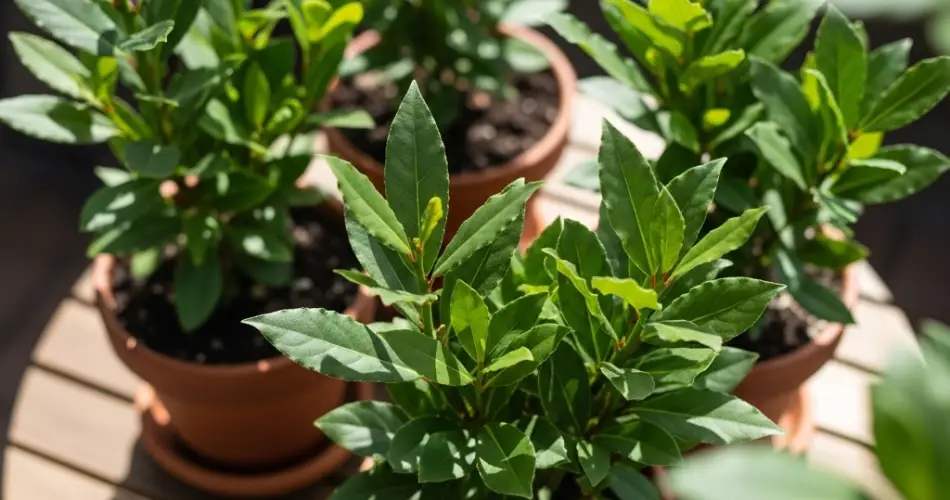Bay trees (Laurus nobilis), known for their aromatic leaves, are a must-have herb for home cooks and garden enthusiasts alike. Whether used in soups, stews, or sauces, bay leaves impart a subtle yet distinct flavor that enhances savory dishes. While bay trees can grow quite large in the wild, they are perfectly suited for container gardening—making them a practical and elegant choice for patios, balconies, and even indoor spaces.
Growing bay trees in pots not only ensures a steady supply of fresh leaves but also adds a touch of evergreen beauty to your home. With the right care and setup, a potted bay tree can thrive for years and become a functional focal point in your herb garden.
Why Choose a Potted Bay Tree?
Bay trees offer a combination of aesthetic charm and culinary usefulness. Their glossy, dark green leaves and neat growth habit make them ideal for decorative purposes, while their leaves provide a flavorful ingredient in countless recipes.
Benefits of growing bay trees in pots include:
-
Portability: You can move your bay tree indoors during cold months or position it for optimal sunlight.
-
Space-saving: Perfect for small gardens, balconies, and patios.
-
Control: Easier to manage soil quality, drainage, and pest issues in containers.
-
Style: Prune into topiary shapes or keep bushy for a more natural look.
Selecting the Right Pot and Soil
Start with a sturdy container that’s at least 30–40 cm (12–16 inches) in diameter and depth. As bay trees have a slow-growing root system, they don’t require frequent repotting but do benefit from a roomy container.
Choose a pot with multiple drainage holes to prevent waterlogging, which can lead to root rot. Clay pots are ideal as they allow for better airflow and moisture evaporation.
Fill the pot with a well-draining, high-quality potting mix. A blend made for shrubs or Mediterranean herbs works well. Add perlite or coarse sand to improve drainage, and include a handful of compost to enrich the soil.
Planting and Positioning
Plant your bay tree in the center of the container and gently firm the soil around the base. Water thoroughly after planting and allow excess moisture to drain.
Bay trees thrive in full sun but can tolerate partial shade. For best results, place your container in a spot that receives at least 6 hours of sunlight daily. South- or west-facing balconies and patios are excellent options.
If growing indoors, position your bay tree near a bright window or under a grow light during the winter months.
Watering and Feeding
Bay trees prefer evenly moist soil, especially during their growing season (spring through early autumn). Water when the top 2–3 cm of soil feels dry, but avoid letting the soil become soggy. During colder months, reduce watering as the plant’s growth slows.
Feed your bay tree every 4–6 weeks during the active growing season with a balanced liquid fertilizer or a slow-release granular blend. Avoid over-fertilizing, which can cause soft, leggy growth.
Pruning and Maintenance
One of the most appealing features of bay trees is their adaptability to pruning. You can shape your tree into a formal ball or pyramid, or let it grow naturally as a bush.
-
Prune in late spring or early summer to control shape and remove dead or damaged leaves.
-
Pinch back new shoots to encourage bushier growth.
-
Remove suckers that grow from the base to maintain a tidy appearance.
Bay trees are slow growers and rarely require major pruning. However, regular trimming improves airflow and keeps the plant compact and attractive.
Overwintering and Temperature Care
Bay trees are hardy in mild climates but sensitive to frost. If you live in a region where temperatures drop below freezing, move your potted bay tree indoors or to a sheltered area during the winter.
Keep it in a cool, well-lit room away from heat sources. Water sparingly during this period—just enough to keep the soil from completely drying out.
Once spring returns, gradually reintroduce the plant to outdoor conditions to prevent shock.
Harvesting Bay Leaves
Bay leaves can be harvested once the plant is well established—usually after the first year.
-
Choose mature, dark green leaves for the strongest flavor.
-
Snip leaves with scissors or pinch them off by hand.
-
Use fresh or dry the leaves by hanging them in a warm, well-ventilated space.
Dried bay leaves actually develop a deeper aroma and can be stored in airtight jars for long-term use.
Pests and Problems
Bay trees are generally low-maintenance but occasionally face issues such as:
-
Scale insects or spider mites – Wipe leaves with a damp cloth or apply neem oil.
-
Leaf spots – Caused by overwatering or poor airflow. Improve drainage and prune crowded foliage.
-
Yellowing leaves – Often a sign of overwatering or nutrient deficiency.
Regular inspection and balanced care will keep your bay tree healthy and productive.
Conclusion
A potted bay tree is both a beautiful and functional addition to any herb garden. With its lush foliage, culinary value, and ability to grow in small spaces, it’s a perfect choice for gardeners of all experience levels. Whether placed on a sunny balcony or near a bright kitchen window, your bay tree will provide flavor, fragrance, and year-round greenery for years to come.



